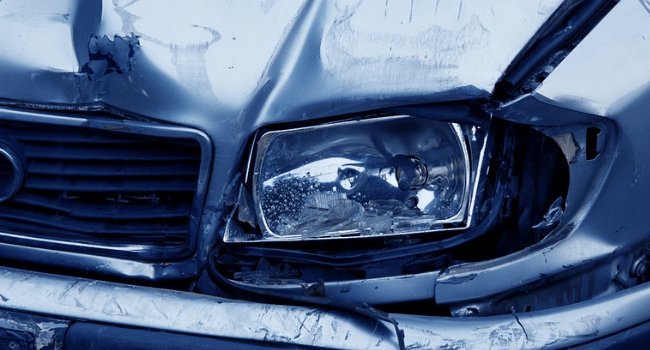Table of Contents
According to data, the United States has some of the busiest roads. In the third quarter of 2021, the USA had 284 million cars in operation. Logically, the United States will see many vehicle collisions annually.
Responsible drivers take precautions and avoid becoming the reason for collisions. However, you can’t always steer clear of becoming involved in one.
For example, reckless drivers put everyone in danger including road workers and pedestrians. Some intersections have short yellow lights and remain a source of frustration for drivers.
Let’s look at seven common car accidents and how to help avoid them.
1. Rear-End Collision
The most common vehicle accident is rear-end collisions. An estimated 1.7 million take place annually. They lead to 500,000 injuries and 1,700 deaths.
Tailgating is the most common reason why rear-end collisions occur. Other causes include:
- Distracted driving
- Speeding
- Road hazards
Emergencies happen. Sometimes drivers need to arrive at a destination in a hurry unexpectedly. If a driver starts tailgating your vehicle, change lanes safely. When the behavior continues, there is no way to gauge what is happening with the driver.
If you can safely pull off the road, do it. You give yourself a few minutes to pull yourself back together. Plus, it puts distance between you and the driver.
Accidents can occur in several conditions. Find out how a car accident attorney can help after a collision.
2. Side-Swipe
Side-swipe collisions occur with parked cars and moving vehicles. Cities limit parking along sidewalks during high traffic times and in high traffic areas. Thus, they are more common in residential areas.
Sometimes it’s difficult to gauge if a person is inside a parked car. The danger occurs when there is someone inside. Then, they fling the driver’s side door open suddenly.
The best way to avoid this accident is to put space between your vehicle and the parked cars. In older neighborhoods, it’s not easy or an option. When cities built those roads, they probably didn’t imagine that traffic would increase exponentially.
Therefore, adhere to the speed limit posted in residential areas.
3. Wrong Way Collision
Drivers who do not know their way around new cities, risk driving onto one-way streets in the wrong direction.
Road work happens across the United States daily. Sometimes they need to block off roads and the closures can throw drivers off their game.
If you see a driver coming toward you on a one-way road, slow down. Then, use your horn. When the driver keeps going, gauge their direction and become aware of other drivers around you. Make your drive safe by learning at IMPROV defensive driving NY.
You can’t swerve out of the way if others are driving around you. However, you can change lanes to avoid the oncoming vehicle.
4. Intersection Collisions
Intersection collisions rank lower than rear-end collisions in occurrence. However, they tend to have deadlier consequences.
They occur when drivers run red lights.
Left-hand turns at intersections that have no left-turn signal can become challenging to navigate too.
Nonetheless, to avoid collisions, drivers must practice extra caution at intersections.
5. Speeding
It’s always tempting to put the pedal to the metal when traffic is light. Some drivers decide to speed on highways even though they have several vehicles around them.
If you notice a speeding vehicle coming up on you, avoid making a sudden lane change. The speeding driver probably already planned to make a lane change without using their signals.
You also don’t want to lower your speed or start stepping on the brake unless necessary.
6. Reckless Driving
Reckless drivers put everyone on the road in danger. This behavior includes changing lanes haphazardly, using technology while driving, or driving under the influence.
If you notice a reckless driver on the road, keep an eye on them and the road. Your goal is to avoid driving next to or near them. Sometimes you need to pull off the road or change lanes.
Safe driving is a responsibility that every driver must uphold. By following traffic laws, maintaining a safe speed, and being attentive to the road, drivers can reduce the risk of accidents and protect themselves and others from harm. It’s also important for drivers to practice defensive driving techniques, such as anticipating potential hazards and staying alert in adverse weather conditions. Additionally, safe driving involves respecting the rights of other road users, including cyclists and pedestrians, and yielding to emergency vehicles when necessary. By prioritizing safe driving habits, drivers can create a safer and more cooperative environment on the roads.
7. Bad Weather
In 2020, the public had to limit the amount of time they spent outside. Aside from public health concerns, bad weather is another reason why you need to check that your trip is necessary.
For example, consider skipping driving during bad weather conditions. Rain mixed with oil causes cars to hydroplane. Icy conditions make the roads slippery.
When it snows and you must drive, remember to put chains over the tires.
Conclusion
Sometimes vehicle collisions happen to you. Other times you might cause them. The DMV will always remind the public that driving is a privilege. Plus, it’s more cost-effective if you avoid causing and becoming involved in collisions.
Read More on KulFiy
5 Traumatic Injuries That Can Happen Following A Devastating Car Accident
Top 5 Secrets To Finding A Great Accident Lawyer
